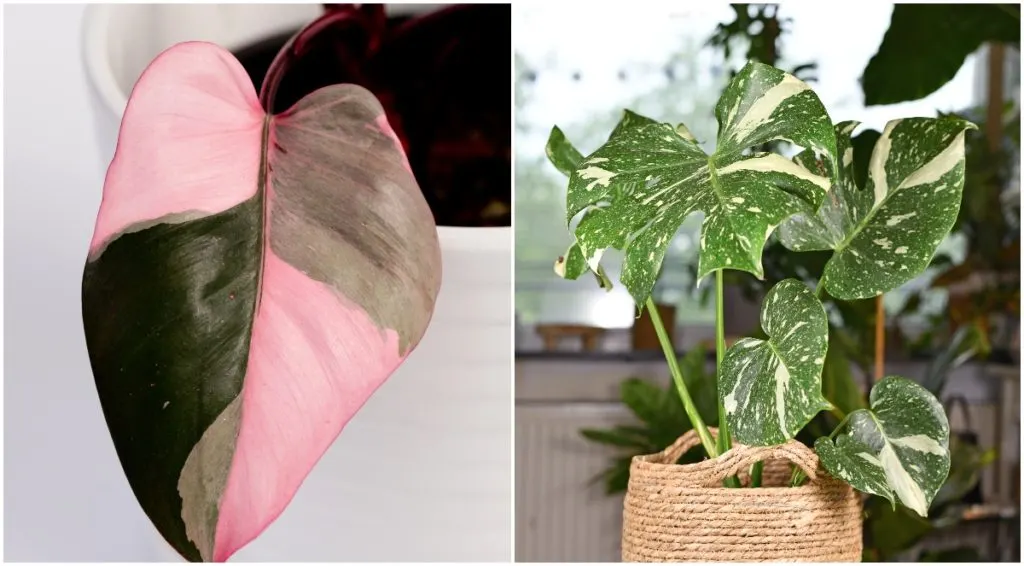
Houseplants have exploded in popularity in recent years. You can’t scroll through social media feeds without coming across at least one self-proclaimed plant parent proudly showing off their plant children.
While the craze started with common beginner-friendly houseplants anyone could take care of, the trend has morphed. Tired of the common and plain, houseplant-obsessed gardeners are now after the rare and unusual.
Some have even become rare plant collectors, curating a jungle full of plants you can’t find at your local nursery.
But rare and unusual plants come with one downside – a high price tag.
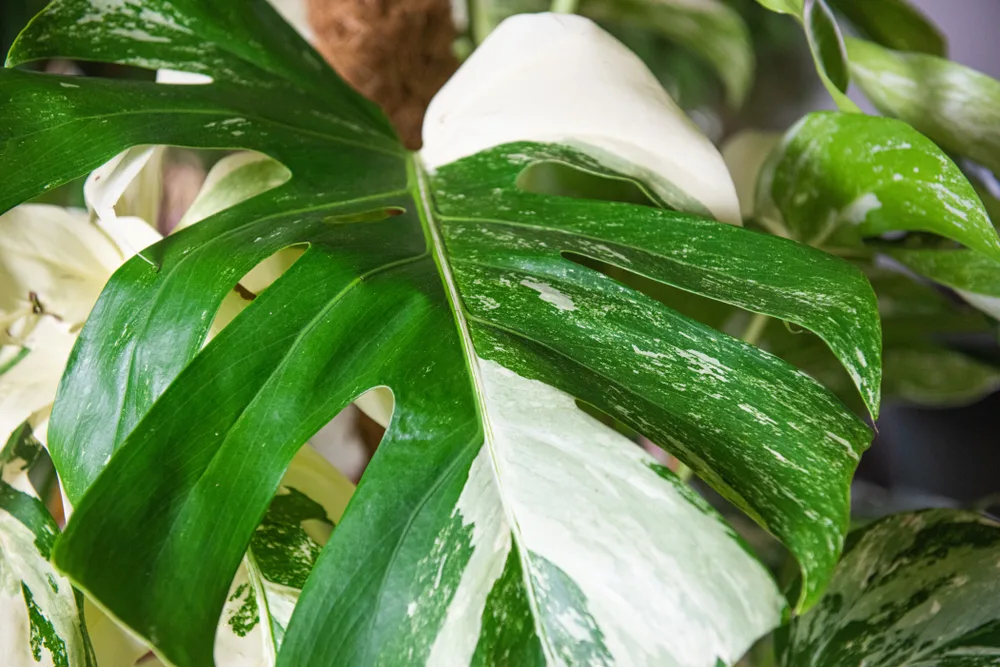
Due to their rarity (and now, their major popularity), many of the most sought-after plants are wildly expensive. That clearly hasn’t deterred collectors, as these plants are often sold out on online marketplaces.
We’re going to cover some of the most popular, social-media-worthy houseplants that have exorbitantly high prices.
To focus on plants you may actually be able to get your hands on, we’re excluding any incredibly rare plants that reach into the tens of thousands of dollars per plant, and the many aged Bonsai trees that can reach almost a million dollars in value.
1. Variegated Monstera
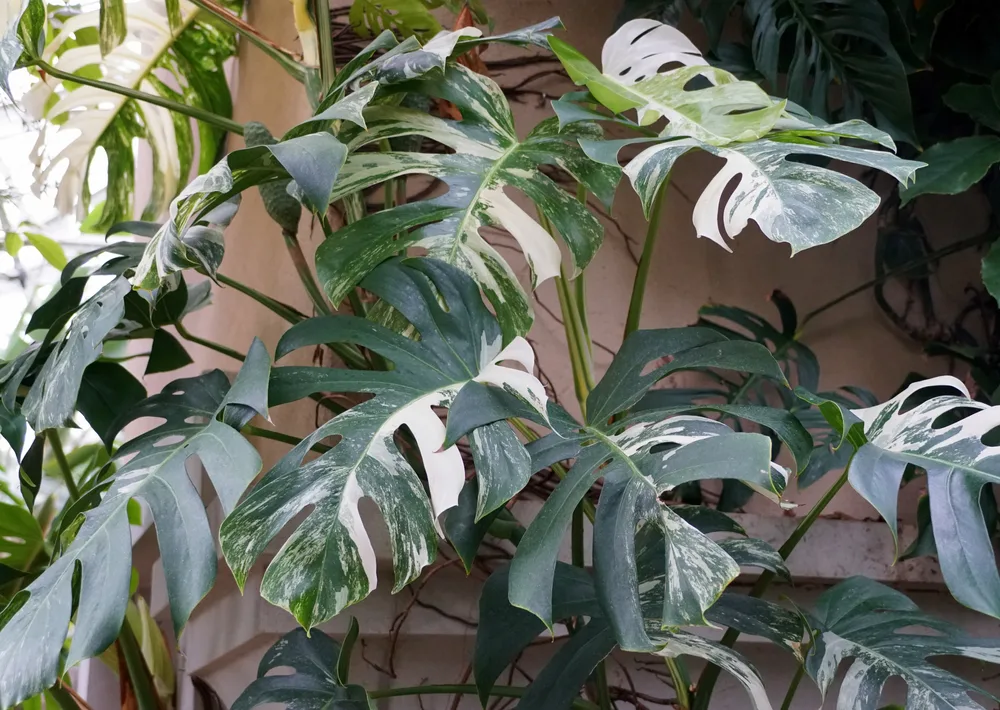
When you think of expensive plants, this is likely the first to come to mind. There are several variegated Monstera types, but Monstera deliciosa Albo Variegata and its cultivars like Thai Constellation are undoubtedly the most popular.
It’s not hard to see why.
When houseplant interest first boomed a few years ago, Monstera deliciosa became the number one indoor plant on the market. When images of large Monstera leaves dotted with white went viral on social media platforms, it became the new must-have.
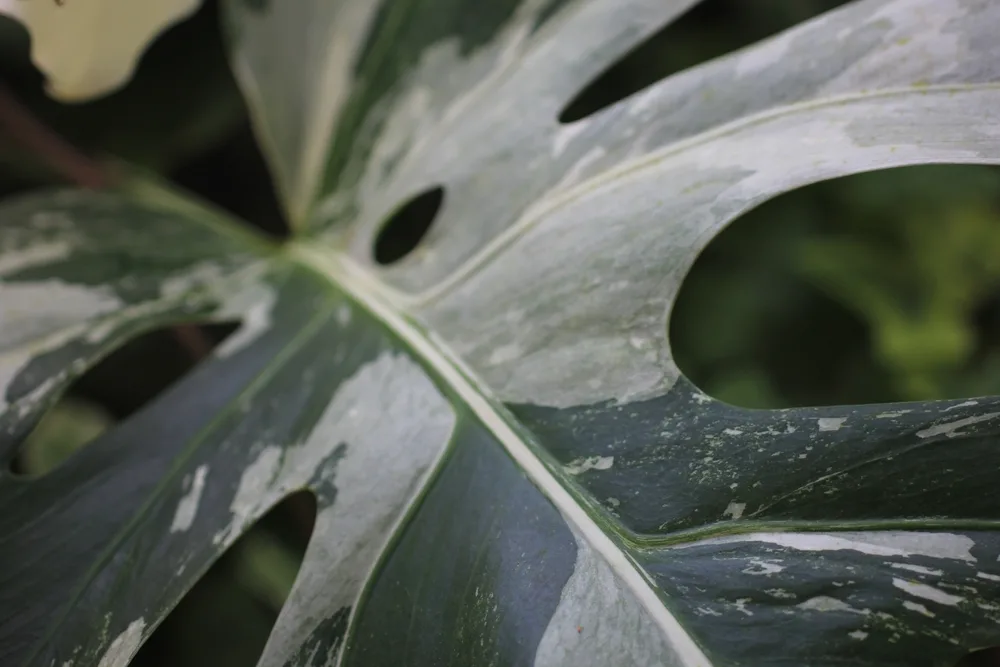
Despite being around for a few years and becoming more common, variegated Monsteras still fetch a high price. They start in the hundreds of dollars and can cost over $1000 for a large and established plant.
There are a number of factors influencing the cost. As variegated Monsteras can only be reproduced by tissue culture or propagation, stock is always limited. Their popularity and the fact that they are almost always sold out has also driven up the price.
On top of all that, they are quite difficult to grow. Keeping them alive is not easy and takes growers a lot of time and resources, making them more costly.
2. Philodendron Pink Princess
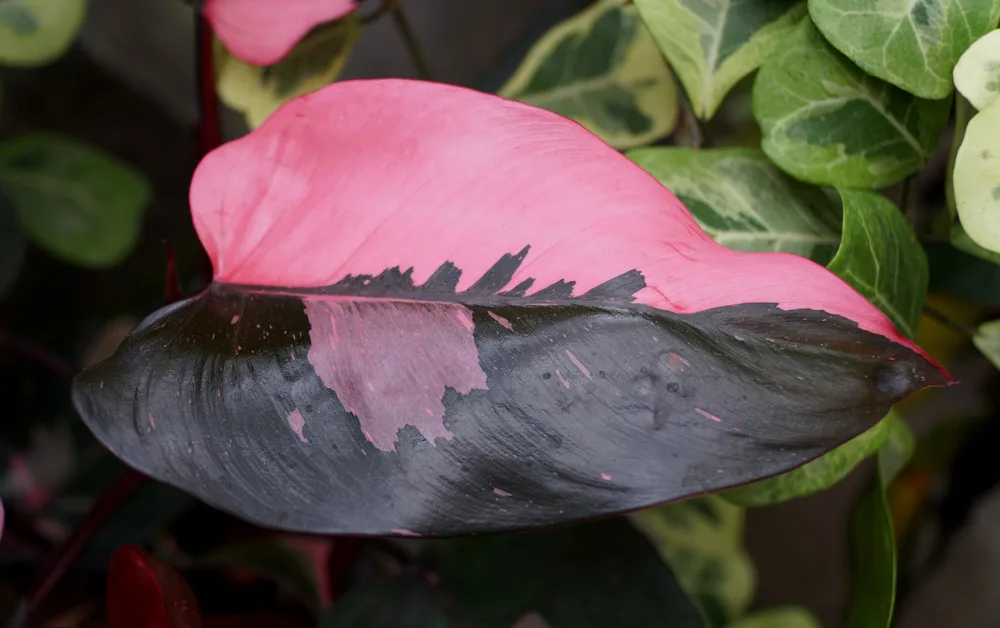
Another social media sensation, the Pink Princess Philodendron has become every houseplant collector’s dream.
This cultivar of Philodendron erubescens has deep green leaves with patches and spots of pastel pink variegation. Depending on the level of variegation, some areas have a lighter green color or spots of greyish pink too. The stems start out bright pinkish-red and slowly turn deep purple as they mature.
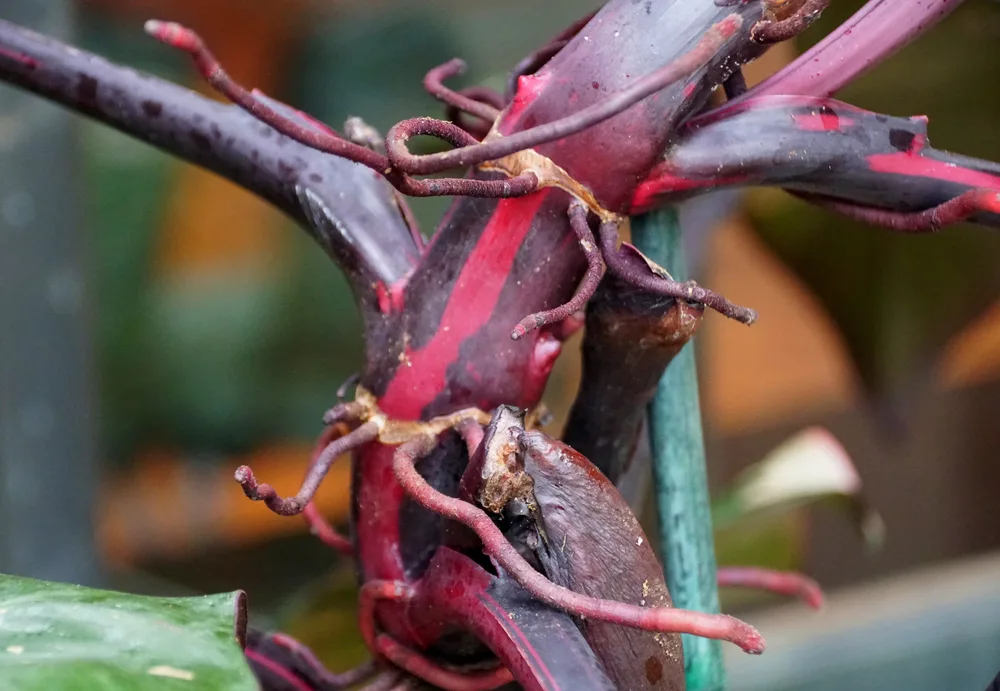
A mere cutting of this plant can cost you at least $100, with established plants costing as much as $2000.
Like the variegated Monstera, this is also due to the difficulty of replicating the variegation to a high enough level to sell, as well as the plant’s popularity.
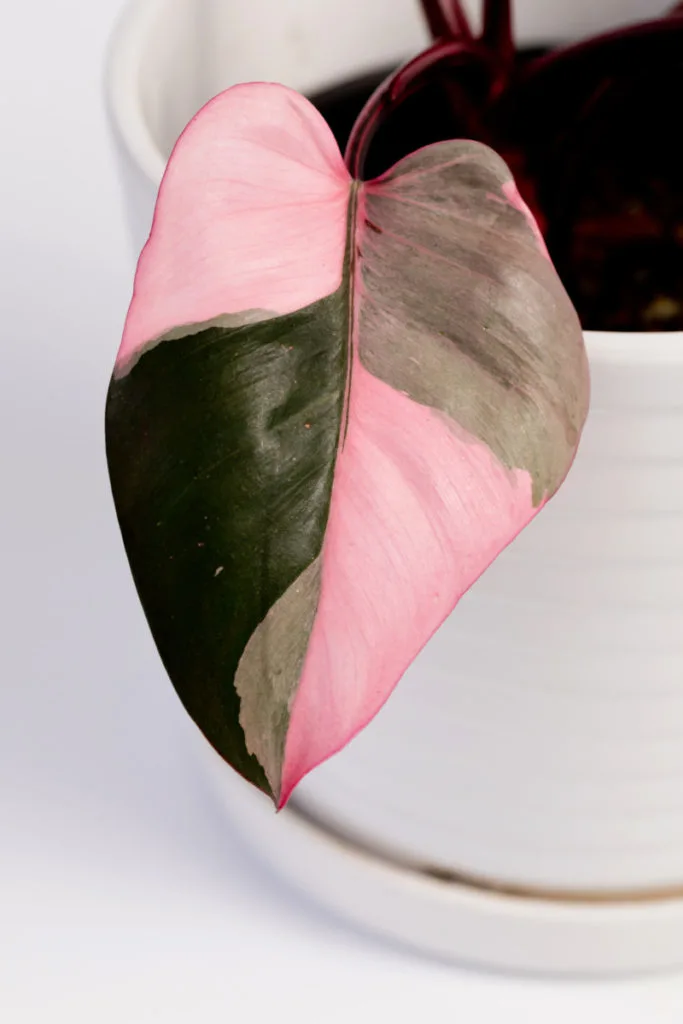
If you spot a Pink Princess for a lower price – be careful. There are plants marketed as a Pink Princess that are actually not the true plant.
Instead, these are artificially modified to produce the pink color. Pink Congo Philodendron is one example, with leaves reverting to the regular green color like any other Philodendron.
3. Philodendron Paraiso Verde
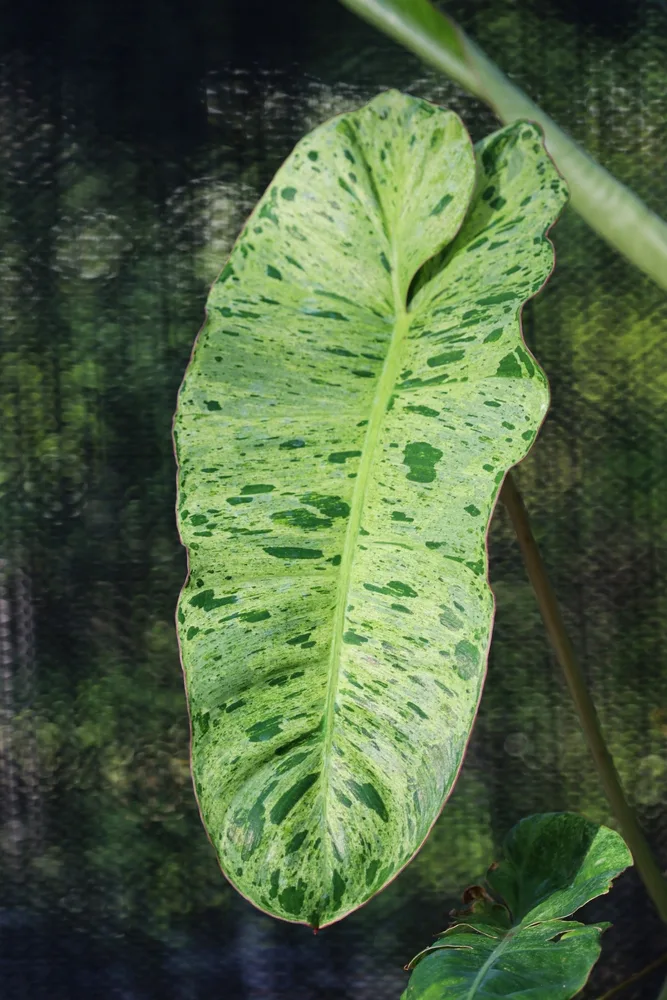
Another rare Philodendron, one of many on this list, is Paraiso Verde – meaning green paradise in Spanish. It is also known as Marina Ruy Barbosa.
The interesting color of the leaves is what has made this Philodendron so sought-after. The elongated and pointed leaves are a mottled green color, with small spots of variegation covering the entire plant.
A small plant with one or two leaves costs just under $100 on average. Prices increase according to the size of the plant. They are quite difficult to come across as they sell out quickly, but you may have some luck finding a Paraiso Verde through online rare plant stores.
4. Philodendron Ring of Fire
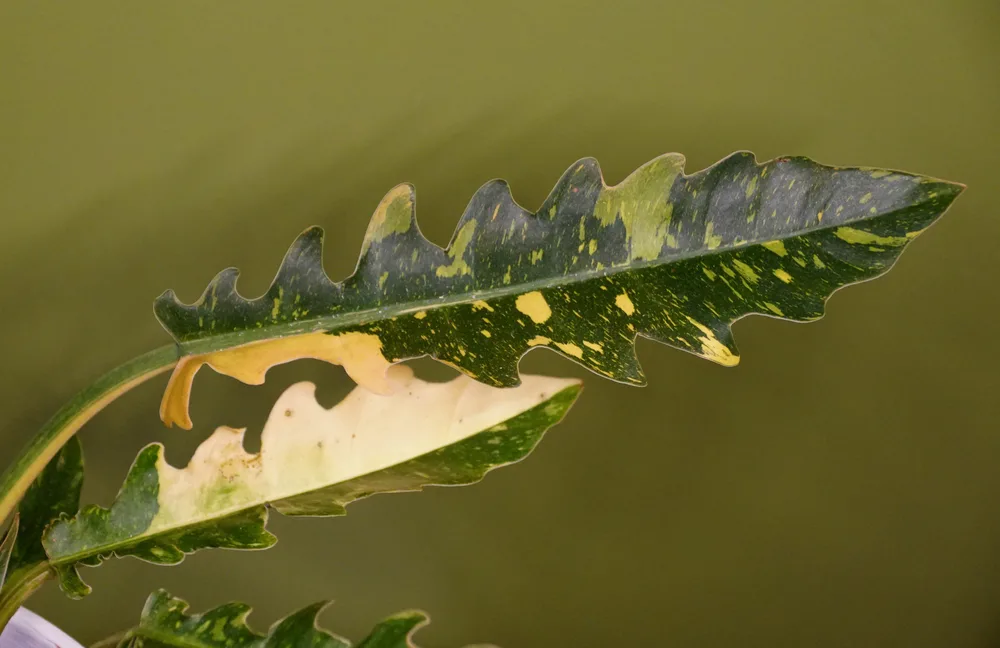
Joining the list of interesting Philodendrons is Ring of Fire. The somewhat ominous name is attributed to the fiery color of the foliage. Variegation ranges from yellow to orange and an almost brick red color.
Not only do the leaves have interesting colors, but they also tend to change color slightly through the seasons. As a hybrid with some relation to the next plant on this list, Philodendron Tortum, the leaves are long and pointed with serrated edges.
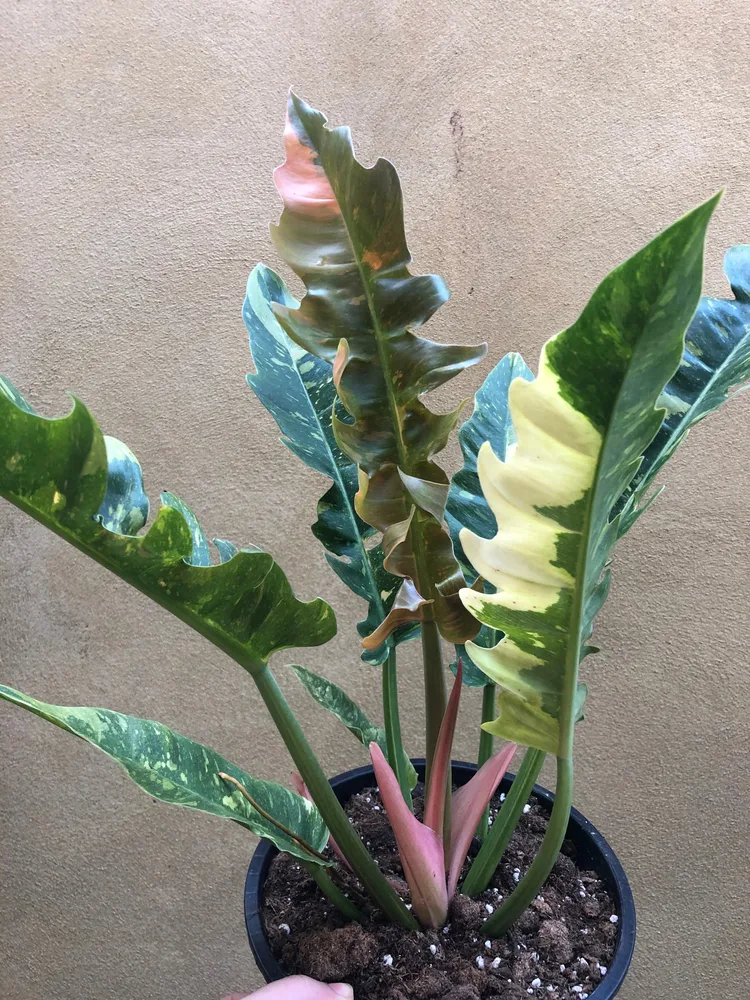
There are a number of reasons for the high price of this plant, starting at just under $100 and increasing with age. The first is its slow growth rate, thanks to the high levels of variegation in the leaves.
That variegation also needs to be replicated by specific methods of propagation, slowing the reproduction of these plants and limiting supply.
Not every propagated plant will have high enough levels of variegation to sell, especially considering most plant owners are looking for the intense half to whole leaf color variation, similar to the variegated Monstera.
5. Philodendron bipinnatifidum ‘Tortum’
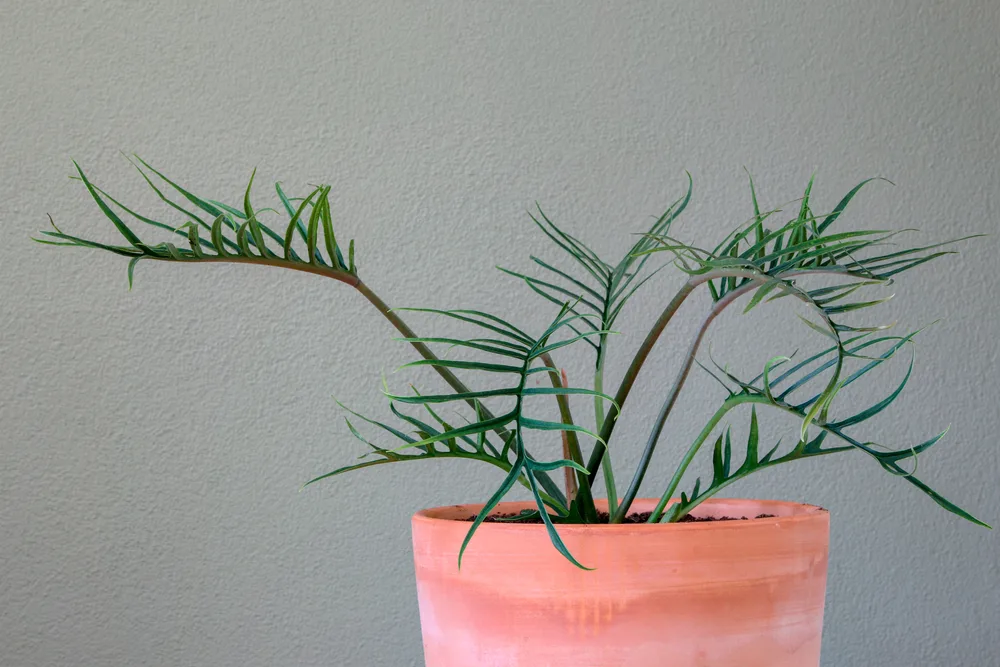
If you’re looking for a Philodendron that doesn’t look like a Philodendron at all, this is the plant for you.
Tortum has large leaves with deep lobes and pointed tips in a stunning deep green color. This shape makes the plant more characteristic of a palm or a fern than a Philodendron, bound to stun and confuse any visitors to your home.
The rarity of this plant comes with an interesting story. Tortum, discovered in 1957, naturally grows in a specific region of the Amazon. Just a few years after its discovery, the Brazilian government declared this area protected, limiting how many plants could be harvested for propagation.
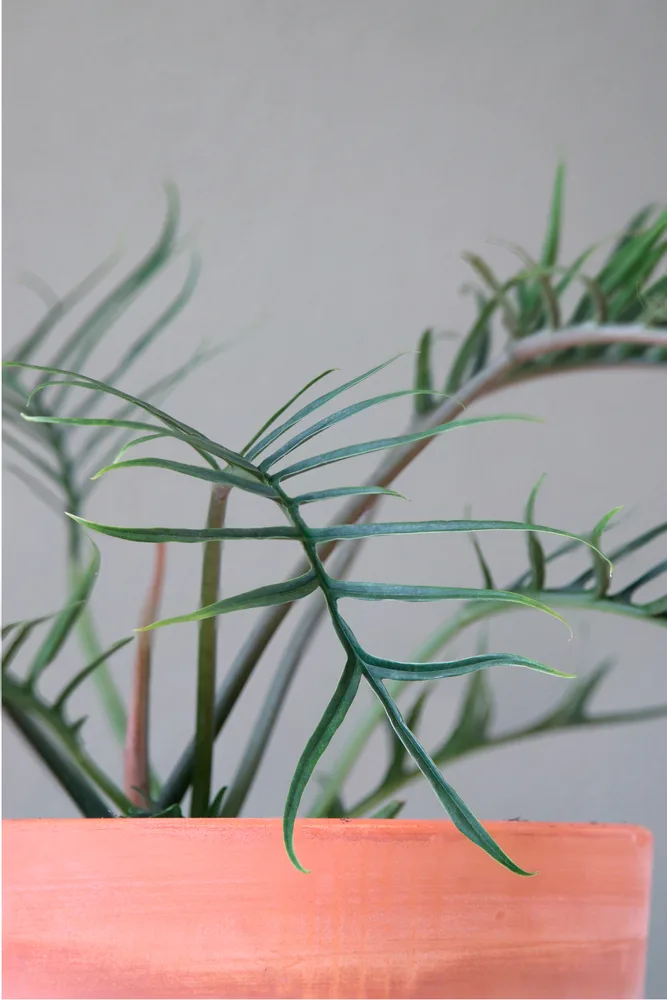
The surge in demand has only made this plant more difficult to get, resulting in a higher price tag. When purchased from a nursery or grower directly, they may not be that expensive, but these opportunities are few and far between.
Instead, houseplant collectors are forced to pay far higher prices from others who have managed to get their hands on one. A large and established plant can cost as much as $250, often more, on marketplaces like Etsy.
Luckily, if you do get your hands on one, you can take comfort in the fact that these plants are quite easy to care for.
6. Anthurium regale
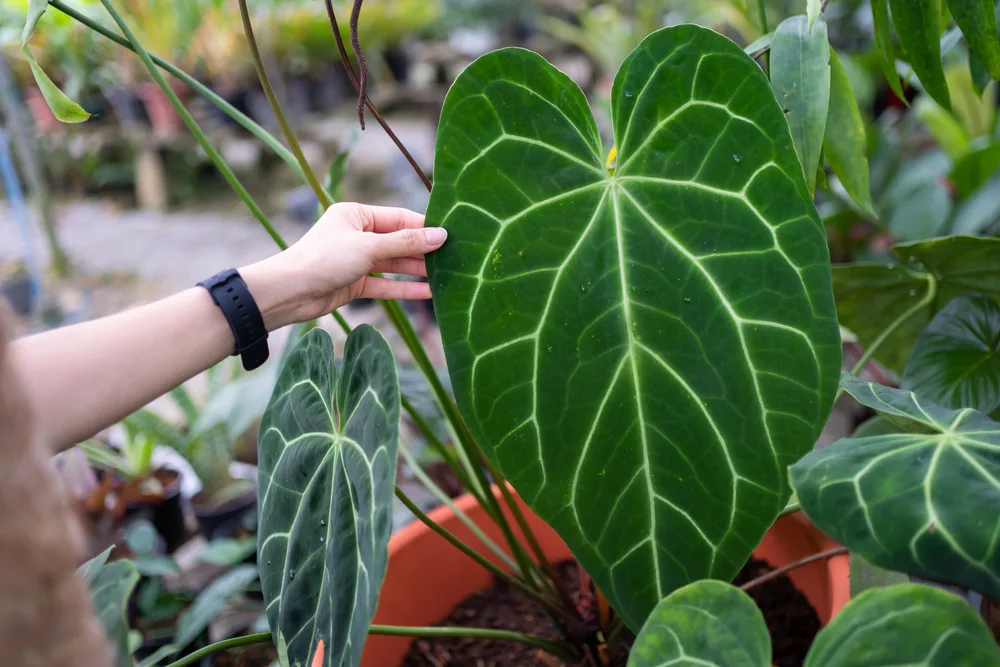
Anthurium regale is a species you may not immediately associate with the traditional Anthuriums we have come to know indoors. Its size, difficulty to reproduce, stunning color, and rarity make this Anthurium one of the most expensive on the market.
Anthurium regale has massive leaves, far larger than most houseplants. They are rounded at the base and pointed at the tips, with bright white veins that allow you to spot them from a mile away.
Smaller plants come in at just under $100 – when they are in stock. However, since they are often out of stock, the few that are available cost far more than $100, some as much as $400. Check local marketplaces and rare plant groups in your area for a more affordable option.
7. Philodendron Gabby
Philodendron hederaceum, also known as Heartleaf Philodendron, is one of the most popular houseplants around.
There are many cultivars, such as Brasil and Cream Splash, but no cultivar is more expensive or rare than Gabby.
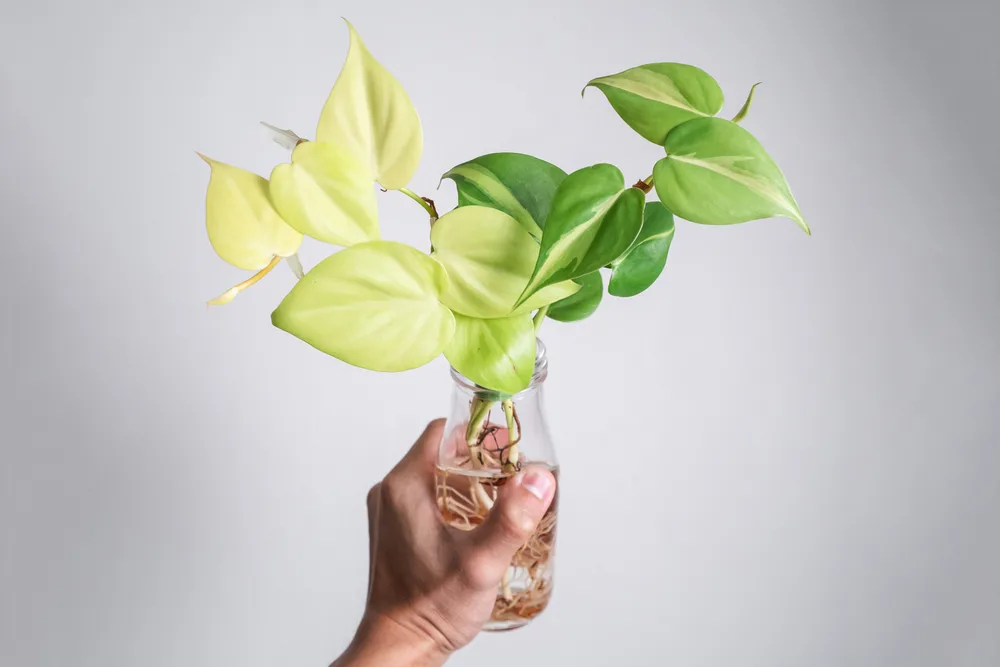
Gabby is a sport of Brasil discovered and sold by Gabriella Plants.
Philodendron Gabby is heavily variegated with creamy yellow and white patches that cover almost the entirety of the leaf.
This variegation is one of the reasons these plants are so popular, as there is no other cultivar like it. However, that is also what makes them so rare and expensive.
Due to the levels of variegation, these plants are incredibly slow-growing. As they can only be reproduced through propagation or tissue culture, building up sufficient stock takes a long time.
According to Gabriella Plants, the difficulty of reproducing this plant means they are only able to grow 300-400 per year, certainly not enough to meet demand.
One small Philodendron Gabby plant will set your back about $500 – that is, if you can manage to get one before they sell out.
8. Monstera obliqua
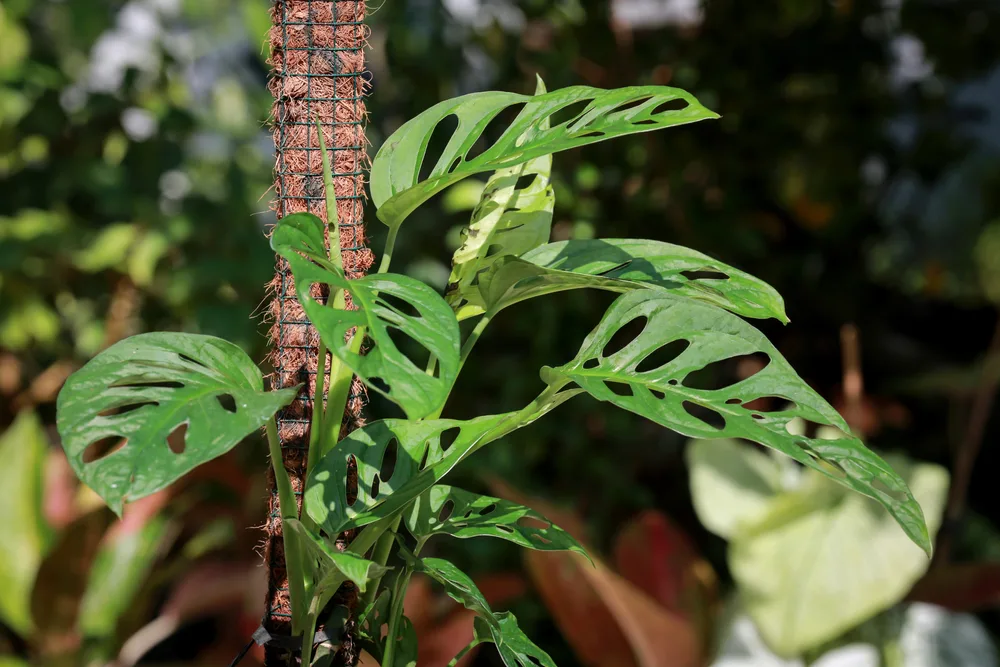
This Monstera species has become the subject of some controversy and a lot of mislabeling. Due to its similarities to the more common Monstera adansonii and its extreme rarity, some houseplant enthusiasts have argued that any commercially sold obliqua is actually an adansonii.
Part of the obsession is due to a commonly referenced statistic that these plants have only been seen 17 times in the wild. While this outdated number is no longer correct, obliqua still remains quite rare and difficult to come by.
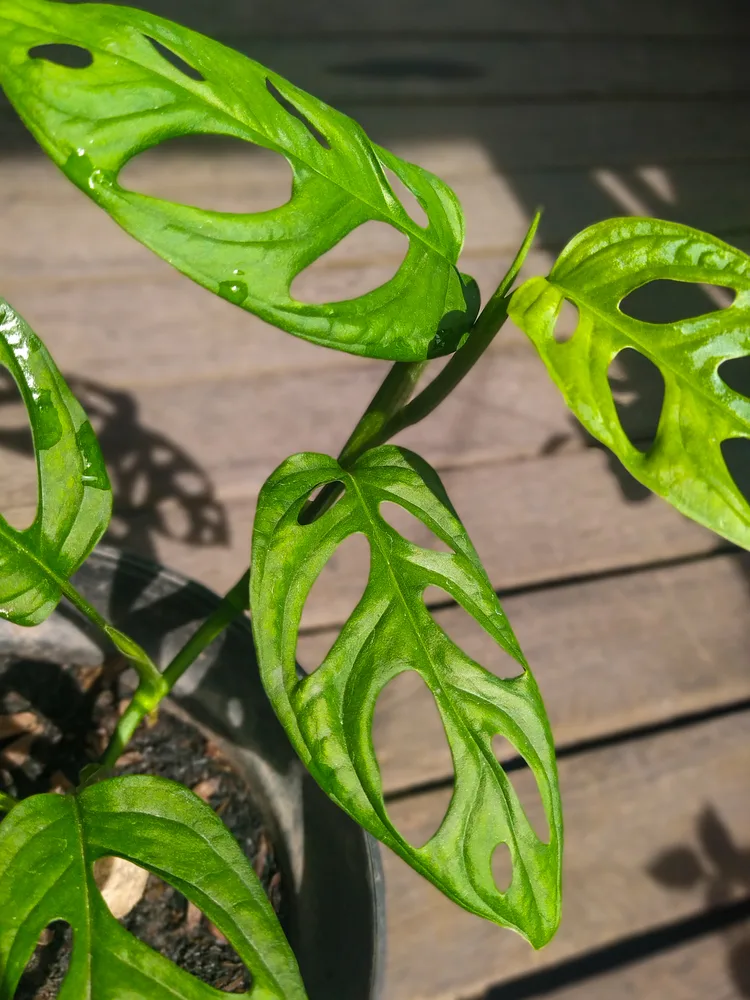
To purchase one of these rare collector’s items, you will need to contact a specialized grower or do some intense detective work to find the real thing.
On auction, one Monstera obliqua plant has sold for as much as $3700. As the interest in this plant increases, that price may grow even bigger.
If you’re on the hunt for one of these, make sure you know how to tell the difference between a mislabeled adansonii and the real thing. Monstera obliqua typically has thinner leaves and more holes than adansonii – to the point where there is more hole than leaf.
9. Variegated Philodendron billietiae
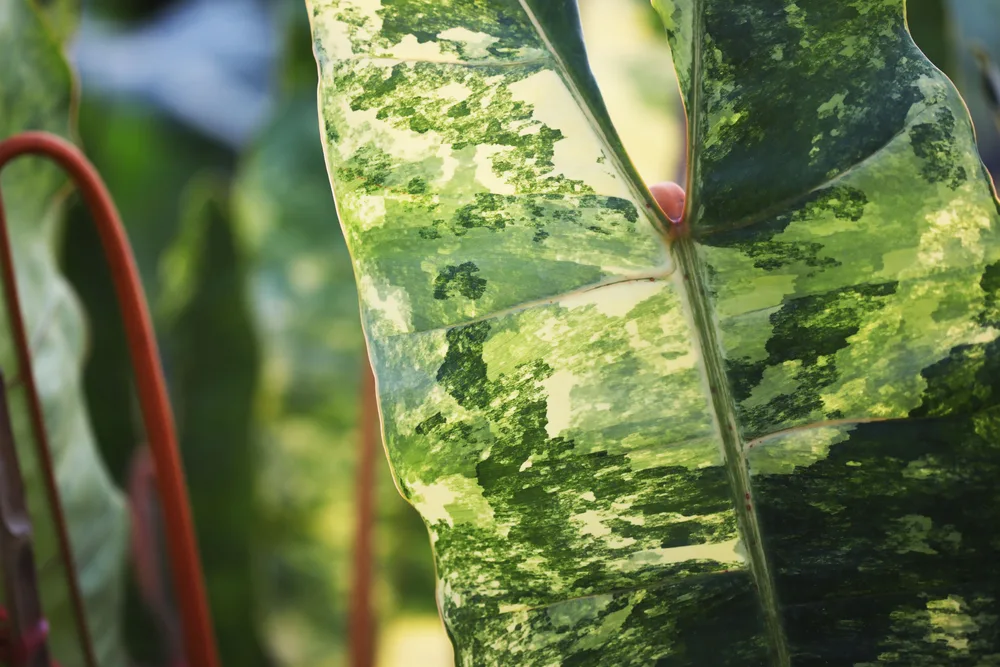
Similar in shape to Paraiso Verde, Philodendron billietiae has become a houseplant staple. Some retailers may sell this plant for a reasonable price, but since they don’t come around often, they are usually resold by collectors with huge markups.
However, the $100 you may pay for a Philodendron billietiae is nothing compared to the cost of the variegated version.
With marbled green and yellow variegation, and large patches left without color, this Philodendron is a truly unique plant.
Typically sourced from private collectors, there are only a few available in the world, leading to eye-watering prices.
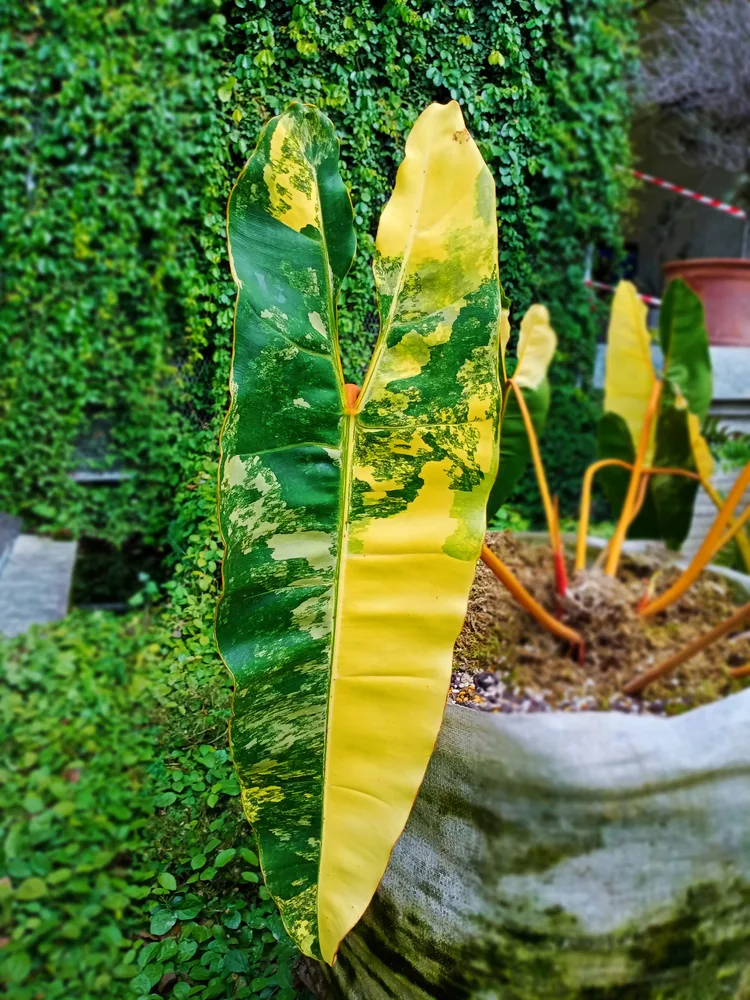
Currently, you can find a variegated Philodendron billietiae for an insane $6000 for a small plant and over $7500 for an established one. This plant is reserved for only the most committed houseplant collectors.

Get the famous Rural Sprout newsletter delivered to your inbox.
Including Sunday ramblings from our editor, Tracey, as well as “What’s Up Wednesday” our roundup of what’s in season and new article updates and alerts.

